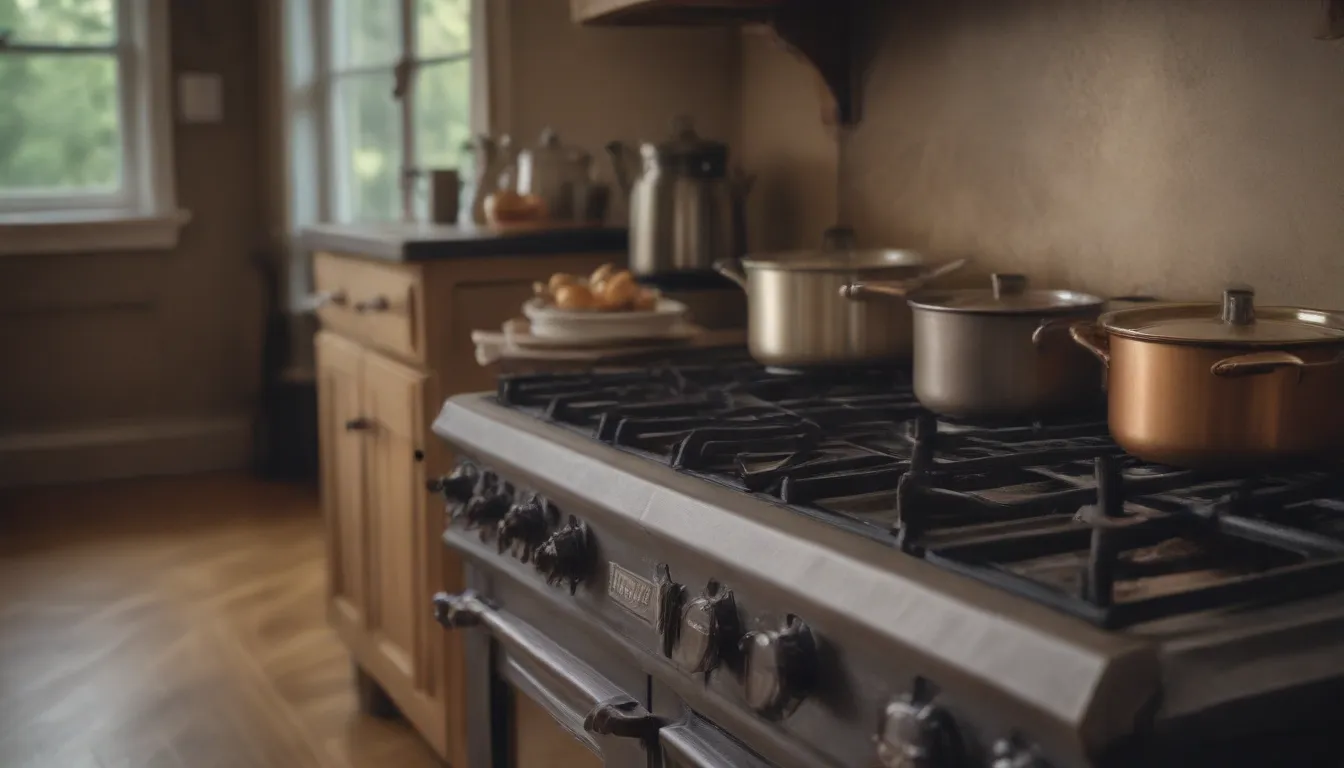A Comprehensive Guide to Choosing the Right Stove for Your Home

If you’re in the market for a new stove, there are a variety of options to consider. From induction to radiant to freestanding stoves, the choices can seem overwhelming. However, by understanding the different types of stoves and how to select the best one for your kitchen, you can make an informed decision that meets your cooking needs. In this article, we will break down the seven basic types of stoves, explore whether they run on gas or electricity, and provide tips on how to choose the right stove for your home.
Understanding Induction Stoves
An induction stove is an electric stove that uses a strong magnetic field to heat up cookware. The cooktop of an induction stove is typically made of ceramic glass and contains elements that heat up ferromagnetic pots and pans. One of the key benefits of an induction stove is its energy efficiency. According to EnergyStar, an induction stove only wastes about 15% of its electricity when cooking food, making it four to five times more efficient than a gas stove. Additionally, it is up to 10% more efficient than an electric radiant or exposed coil stove.
When considering an induction stove, it’s essential to note that it requires specific types of cookware, such as cast iron, enameled cast iron, or stainless steel. Aluminum and glass cookware can be used with a metal pan adapter. While the burners on an induction stove are induction-style, the oven functions as a conventional, electrically powered convection oven.
Exploring Radiant Stoves
A radiant stove is an electric stove that features burners under a smooth ceramic glass top. Similar to an induction stove, radiant stoves provide a sleek appearance with a hidden heating source. The coils in radiant stoves radiate heat upwards through the glass, making them easy to clean when cool. While any type of cookware can be used with a radiant stove, caution is advised when using cast iron, as it can scratch the glass. It’s recommended to clean the surface with a sponge or paper towels, and a ceramic glass top cleaning product may be used for tougher spots.
Tip: Consider a stove with a bridge element burner, which connects two round heating elements to create a larger oval-shaped cooking area for added versatility in the kitchen.
Electrifying Your Cooking with Electric Stoves
Electric stoves heat cookware through direct contact with exposed heated coils. These stoves typically feature burners on top and a convection oven on the bottom. Electric stoves with exposed coils are known for their durability and ease of maintenance, as coils can be easily removed for cleaning or replacement. However, cleaning can be more challenging compared to smooth glass top stoves, as food particles can clog the coils or drip pans.
Choosing a Freestanding or Slide-In Stove
Freestanding stoves are versatile options that feature burners on top and an oven on the bottom. They can come in induction, radiant, electric, or gas configurations. Unlike slide-in stoves, freestanding stoves have a raised panel on the back that houses burner controls and acts as a backguard. Some models may have controls located in the front, offering flexibility in kitchen layout.
Alternatively, slide-in stoves are similar to freestanding stoves but lack a back panel, resting against a backsplash on the wall. With controls located in the front, slide-in stoves seamlessly fit between kitchen cabinets for a sleek appearance. Consider adding a heat-resistant backsplash for added protection and style.
Embracing a Commercial Style Stove
A commercial style stove mirrors those found in restaurants, featuring higher burner grates, increased flame capacity, and special features like griddles. These stoves are typically gas-powered and come in various widths, from 30 inches to 60 inches. While similar to slide-in stoves, commercial style stoves do not include a backsplash, allowing for customization with optional matching backsplashes or personal installations.
Ventilating with a Downdraft Stove
A downdraft stove combines burners, an oven, and a ventilation system that eliminates the need for a separate exhaust fan and hood. The ventilation tube pulls cooking odors, steam, and smoke down through the stove, exiting through a side or top vent in the house. Downdraft stoves can be either gas or electric and offer a sleek, space-saving solution in the kitchen.
How to Choose the Right Stove for Your Home
When selecting a stove for your kitchen, consider the following factors to ensure it meets your needs:
Stove Fuel Source:
- Decide between gas or electric stoves based on your existing fuel source or desired cooking preferences.
- Keep in mind that some stove types may require additional electrical or plumbing work for installation.
Stove Style:
- Choose a stove style that complements your kitchen aesthetics and cooking style.
- Consider options such as induction, radiant, freestanding, slide-in, commercial-style, or downdraft stoves.
Stove Size and Design:
- Determine the width of the stove that fits your kitchen layout, with most stoves being 30 inches wide.
- Consider the placement of the stove in relation to surrounding cabinets and the need for additional finishes or backsplashes.
Stove Costs:
- Electric stoves typically start at $500, with higher-end models ranging up to $5,600 for induction stoves.
- Consider the long-term energy savings of an induction stove to offset the initial purchase price.
In conclusion, choosing the right stove for your home involves considering your cooking habits, kitchen layout, and budget. By understanding the various types of stoves available and their features, you can make an informed decision that enhances your cooking experience. Whether you opt for an energy-efficient induction stove or a commercial-style stove with restaurant-quality features, there is a stove that meets your needs and elevates your culinary adventures. Happy cooking!





